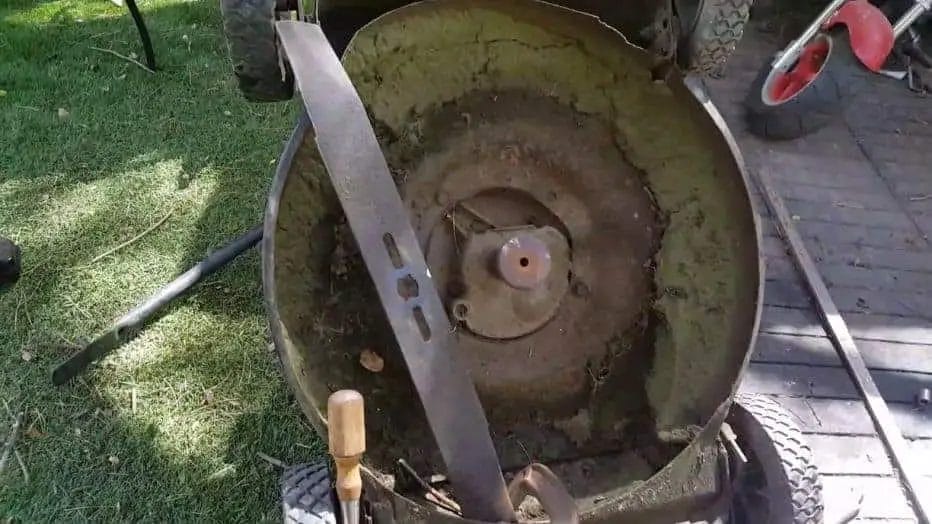If you don’t know much about all the inner workings of a lawn mower, it can be a bit panic-inducing if your lawn mower suddenly starts making strange noises, vibrating erratically, or acting in other ways that it usually doesn’t.
If you’ve experienced unusual lawn mower symptoms, there could be any number of causes and it’s likely that a quick Google search will bring up some suggestions. But just as googling your own health symptoms can lead to misinformation and lead you down incorrect paths, googling your lawn mower symptoms isn’t always that helpful either.

Majority of lawn mower issues will stem from faults or damage within the engine, and the crankshaft can be a common culprit. But how do you know if it’s the crankshaft causing the problem?
We’ve outlined some key indicators that your crankshaft could be bent so that after reading this article, you should know exactly what to look (and listen) for!
The first thing to watch out for when considering whether your crankshaft is bent is noise. If you mow your lawn regularly, or even if you’ve seen and heard someone else using a lawn mower a few times, you’ll know more or less what a healthy one should sound like.
There should be a steady, continuous hum that might change slightly if a patch of thicker grass is mown over or if there’s a particularly gritty section of lawn. Small and transient changes in your lawn mower’s sounds are normal.
If, however, you start hearing spluttering, clanking, or excessively violent vibrations, this is often a tell-tale sign that your crankshaft is bent or damaged. These kinds of sounds are usually easy to tell apart from normal lawn mower noises as they will often come on very suddenly for no apparent reason.

The other most commonly noticed indicator of a bent lawn mower crankshaft is if you have trouble starting your lawn mower. If your lawn mower usually starts in one go without any hassle, but suddenly it seems like nothing you do will get it to fire up properly, the crankshaft should be your first point of call.
Aside from issues with starting your lawn mower up, if you notice it keeps cutting out randomly, this could also be a sign that there’s an issue with the crankshaft.
Noise and transmission problems are the most common problems that will help you to identify a bent crankshaft, so if you notice anything like this, stop your mower immediately and investigate further.
There are several ways to approach checking your crankshaft to ensure it’s not bent but the simplest and most fool proof method is by manually inspecting the lawn mower engine. There are a few key steps to follow that will make this process speedy and easy:
This method will tell you without any shadow of a doubt, whether your crankshaft is bent or not. A straight crankshaft will not wobble or sway when the blades spin, so there will be no unevenness or scraping.

The other method involves measuring the position of the blades which can be a little more time consuming and less direct.
As you probably already know, lawn mower engines spin at incredibly fast rates and subsequently require a lot of kinetic energy to operate properly. Most of the time while you’re mowing, your lawn mower engine is spinning away largely unimpeded.
If you hit a rock, bit of metal, tree stump, or large root, the spinning of the lawn mower blades is abruptly interrupted which causes a lot of shock to be absorbed and passed through the engine, travelling through the blades and up the crankshaft.
Because mower engines spin so fast, the energy passed on by the collision can be enough to bend or even break the crankshaft. Unfortunately, this is not an issue that we can help most of the time – after all, no one is purposefully pushing their mower over large, immovable obstacles!
The only suggestion to avoid this would be to give your lawn a visual once-over before you start mowing to try and spot and eliminate any potential hindrances that could cause damage to your mower.
It is certainly possible to do so as long as you have the right tools and the necessary know-how, but there are disadvantages that come with attempting the fix yourself.
Of course, most people will not know enough about lawn mower mechanics to automatically know how to fix a bent crankshaft, so some proper research will be required. If you haven’t got all the right tools, you’ll also need to invest in buying some which might not be the best way forward if you don’t think you’ll use these tools much otherwise.
Whilst many people will be able to execute the fix successfully, you run the risk of causing further damage to the engine if you don’t know exactly what you’re doing, and this can lead to more problems down the line.
(image of a stop sign)

Fixing your lawn mower engine yourself will also void your warranty in a lot of cases, as many manufacturers stipulate that any repairs should be undertaken by a licensed agent. This could be a problem for you if your mower requires repairs at another stage that you are not capable of making yourself.
At the end of the day, the best way to approach a suspected bent crankshaft is to listen for undue or strange noise, watch out for transmission issues, and visually inspect the crankshaft to confirm your suspicions.
These are steps that virtually anyone can take, and noticing the signs early on will stop you from using your lawn mower in a subpar condition and potentially worsening the damage.
Once you know that the crankshaft is to blame for the troubles, you can then contact a manufacturer-approved technician who will be able to help you repair the crankshaft without affecting your warranty.